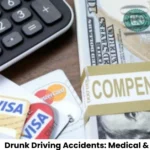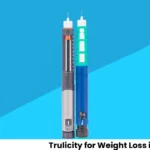Prescription medication costs are unpredictable, even for repeat prescriptions. Factors driving price differences include wholesale acquisition costs, rebates between insurers and pharmacy benefit managers, pharmacy markups, and insurance copays or coinsurance. Location also plays a role. However, a lack of transparency confuses patients nationwide, causing price swings even when changing pharmacies or insurance coverage.
Because price disparities are so widespread, it’s more important than ever for consumers to use every tool at their disposal to take control of medication spending. Researching available savings programs and comparing prices among pharmacies can yield eye-opening results. Services such as BuzzRx provide an easy starting point for identifying pricing gaps and unlocking savings on commonly prescribed medications. They should be a cornerstone in any strategy to reduce medication costs.
Helpful Tools to Compare Medication Prices
Digital technology has revolutionized the pharmacy market, enabling consumers to compare medication prices at nearby pharmacies. Price comparison websites and mobile apps provide instant access to generic and brand-name options, discount coupons, and pharmacy-specific deals. These tools can often result in significant savings, usually found through platforms that negotiate bulk savings or highlight special promotional pricing. To effectively use these tools, check multiple websites or apps, compare local price fluctuations, and ask for price matches with your pharmacist. Compare dosage strengths and packaging, as sometimes a 90-day supply or generic version is cheaper per dose than a 30-day prescription or brand-name equivalent. Please print or save digital discount coupons and combine them with pharmacy club or membership deals. This extra step ensures informed decisions and can lead to significant savings for flexible and persistent patients.
Generics: Safe, Effective, and Far Less Costly
Choosing generic medications over brand-name ones is a simple and effective strategy for substantial savings. Generic drugs use the same active ingredients and undergo the same rigorous approval process as their branded counterparts, with the only differences being inactive components and packaging. Nearly 90% of prescriptions in the U.S. are filled with generics, resulting in billions of dollars in annual savings. When prescribed a new medication, ask your healthcare provider if a generic option is available. For chronic conditions like high blood pressure, cholesterol, or diabetes, generics offer cost advantages over brand-name drugs over the long term. If a generic isn’t available, consider equally effective therapeutic alternatives. These conversations can pay off, as the difference between a brand and generic for some drugs can be more than $100 per month, making medications more accessible for families on tight budgets or high-deductible insurance plans.
Programs That Help Cut Prescription Costs
A growing number of assistance programs are helping Americans reduce medication costs. These include patient assistance programs, state prescription discount cards, pharmacy savings clubs, and community and nonprofit programs. Drug manufacturers often offer free or discounted medications to low- and middle-income patients, with the application process being time-consuming but usually significant. State programs provide lower prices at participating pharmacies, making them an excellent alternative to insurance copays. Pharmacy savings clubs offer deep discounts on generics, often for an annual fee well below the price of a single medication. Local health departments, clinics, and nonprofits also run seasonal programs or provide free samples for chronic disease management drugs. Patients should not hesitate to discuss financial concerns with their healthcare team, who can connect them with program applications or social workers.
Tips for Talking to Your Healthcare Provider
Patients often struggle to openly discuss their prescription costs due to embarrassment or a lack of information. Respectful communication with doctors or pharmacists can help tailor care more effectively. Prescribers are often familiar with local cost-saving programs and can suggest less expensive but equally effective therapies. They can also review a patient’s list of medications to identify overlaps or suggest combination products to save money. Ask questions like if there are lower-cost generics, different drugs, manufacturer discounts, coupons, or local community programs for the same medication, and if mail-order or online reputable pharmacies are available. These conversations help identify factors driving costs and empower providers to find the best solutions for both health and budget.
Common Mistakes That Lead to Overspending
Mistakes in prescription filling include not comparing options, not researching prices, not considering alternative out-of-pocket pricing, overlooking savings clubs, patient assistance, and pharmacy-issued savings programs, and not openly communicating cost concerns with healthcare professionals. These mistakes can lead to costly mistakes, especially for those managing chronic illnesses or multiple prescriptions. It is crucial to research and use prescription price comparison tools, consider alternative out-of-pocket pricing, and communicate cost concerns openly with healthcare professionals to maximize healthcare dollars..
Disclaimer: The content on Wellness Derive is for informational purposes only and not a substitute for professional medical advice, diagnosis, or treatment. Always consult a healthcare provider for medical concerns.



